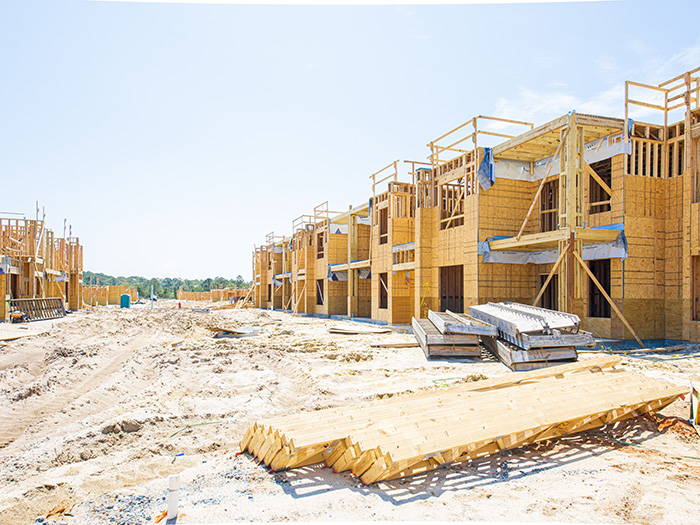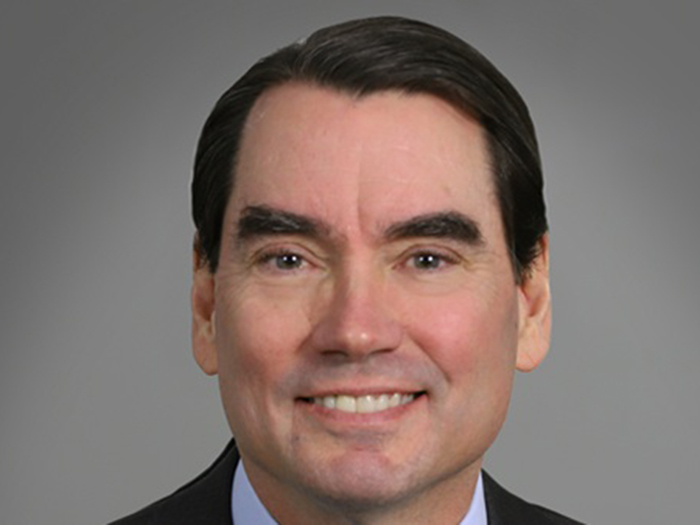Sponsored Content by Nationwide
3 Economic Forces Putting Strain on Construction, and How Insurers and Insureds Are Responding

It’s been a tough three years for the construction industry.
Lingering labor shortages and supply chain issues brought on by the pandemic have caused project costs to shoot up. In an effort to govern inflation, the Federal Reserve has raised interest rates, resulting in higher borrowing costs.
Noticing a pattern? Today’s economic conditions are increasing the cost of construction projects, which in turn multiplies the cost of an insurance loss should a claim occur. Beyond increased materials and labor costs, the industry is contending with a spate of nuclear verdicts — those over $10 million — making litigation more perilous than ever.
Still, contractors and their insurers have remained resilient. They’re taking advantage of federal funding opportunities, strengthening rates and introducing innovative risk management strategies so that they can continue building. Carriers who have been in the business for decades are equipped to help construction insureds navigate today’s market.
“The market is in a really interesting juxtaposition right now,” said Helen Fry, vice president of E&S Brokerage Construction at Nationwide. “There’s an advantage to being with more stable carriers that have been around a long time.”
Here’s a look at three key economic pressures — and how contractors and their insurers are responding to today’s market conditions.
How Construction Insurers Are Tackling 3 Key Economic Pressures

Helen Fry, Vice President of E&S Brokerage Construction, Nationwide
High interest rates: One primary economic challenge contractors faced over the past few years is rising interest rates. High interest rates can make it difficult to secure funding for a project, but lately, it hasn’t slowed contractors down.
“There’s been an uptick in construction starts in the last 60 days,” Fry said. “I think people were waiting for interest rates to come back down. Now that it’s very evident that that’s not happening anytime soon, they’re forging ahead and moving forward using alternate investment opportunities and just biting the bullet on the rates.”
In the face of high rates, some are turning to infrastructure projects, like building roads and bridges. Federal funding for these projects via the infrastructure bill can help contractors avoid rate constraints.
“Infrastructure’s the unicorn in that they’re not financing-dependent right now because of the infrastructure bill. I think that’s been a boon for the sector,” Fry said. “You don’t have to rely on lenders, and interest rates aren’t a factor. It’s allowing them to keep working without having to be completely reliant on lending.”
Supply chain challenges: The good news for contractors is that some of the strain caused by today’s economic conditions is fading. Supply chain issues and the rising materials costs associated with them have eased somewhat over the past year.
“We’re still seeing a hangover of supply chain issues, particularly for lumber and other building materials, although it has improved in the last 12 months,” Fry said. “Costs are still elevated, but we are seeing some softening.”
Labor shortages: Unlike supply chain issues, labor shortages have not improved much over the past year. A lack of construction workers is still battering contractors.
“The labor shortages are still prevalent,” Fry said. “Once everything else started improving, I think the thought was labor shortages would improve, and they have not. Labor is expensive. It’s hard to come by and it’s really slowing jobs down.”
When facing talent gaps, it’s important that contractors prioritize safety. An injury could exacerbate talent shortages and cause further delays. Some in the construction industry have tried to cut costs by not cleaning up sites daily or skimping on safety training, but this goes against best practices. It’s paramount to maintain worksite safety to cut down on slips, trips and falls, and other injuries.
“They should be ensuring that whoever they’ve got in charge of that jobsite, usually a general contractor, has an on-site supervisor at all times, and that they’re conducting those daily meetings and they’re constantly walking the site, constantly looking for hazards,” Fry said. “Running the cleanest job site you can will save you a lot of money on your insurance in the long run because it’s going to avoid claims.”
Construction Costs Are Outpacing Insurance Rates
As economic pressures increase the costs of a potential loss, it would be logical for construction insurance rates to increase. Yet Fry says rates have remained depressed. “We should be seeing real strengthening of rate to keep ahead of the loss costs we are seeing, and we are not,” she explained.
This is partly due to increased capacity in the construction segment. New entrants are keeping rates low, though that gamble may prove risky in the long term. “We’re seeing a lot of new capacity come into the market,” Fry said. “They don’t have historical losses to deal with in their rating structure, so they’re buying business at a depressed rate.”
New entrants could be at risk of going out of business due to the high costs of losses if they keep writing at low rates. “With some of the new capacity, the reality is they’re not going to be here when claims are filed,” Fry said.
As a result, insureds want to make sure they’re partnering with established carriers. “The focus really should be long-tenured, stable insurers like Nationwide,” Fry said. “We have to price for the long game because we’re going to be here for the long game.”
Why Insureds Need an Experienced Carrier to Help Navigate These Economic Pressures
Today’s economic pressures demand construction insureds seek out experienced carriers who are committed to partnering with their business long-term. “We have a very long-tenured construction underwriting group,” Fry said. “This is the business they know and it’s what they do every day.”
Nationwide’s experienced underwriters are specialists, focusing only on a single vertical. In construction, that means there are dedicated construction underwriters who focus on either primary or excess construction business. By specializing, underwriters develop deep knowledge of their line, allowing them to better price exposures.
“For our brokerage based business, we’re not generalists,” Fry said of her team. “We specialize. We have a construction vertical, and construction is all we do.”
This specialization extends to Nationwide’s in-house claims team. Adjusters are experienced in working with construction losses, and they can pass information on claims trends to underwriters, allowing them to better price individual risks.
“I have a few claim teams that support my business and my business only. In construction, they know how to handle the claims and they can give me feedback on what they’re seeing and trends, and I can react to that on the underwriting side,” Fry said. “Claims mirrors what we do from an underwriting standpoint. As we specialize, they adjust with us, and it’s been invaluable.”
Expert underwriters are aided by a sophisticated technology platform that gathers submission data in one convenient location. Fry’s group also gets pricing support via various tools. These tech tools help make the underwriting process faster and more thorough, but an expert underwriter with deep industry knowledge still touches every quote — allowing them to develop creative solutions when needed.
“Machines will never replace strong underwriting knowledge and human review,” Fry said. “Our philosophy on technology is to improve efficiency and provide information rather than make decisions. That’s what we have our experienced people to do.” The result is a marriage between technology and knowledgeable underwriters that allows brokers and agents to get quick quotes for their clients.
“Speed to respond to submissions is key. We would rather our brokers know upfront that we’re not a viable option for a particular risk. That way, they can move on to a market that is,” Fry said. “The more complete a submission, the better we can price it out of the gate. We will provide an initial indication that addresses price and terms while we gather additional information if needed, and that works really well for our brokers.”
At Nationwide, underwriters prioritize building relationships with insureds for the long haul. The firm’s in-house loss control unit can offer risk management guidance and help insureds navigate the challenging economic conditions that are putting pressure on the construction arena.
“Not only do they go out to sites and do site visits, speaking with insureds on individual risks, they also do a lot of industry research. They publish a lot of information that we can share with our policyholders, our agents and brokers, and that’s been really invaluable,” Fry said.
By building long-term partnerships with insureds, Nationwide can help its clients grow their businesses or guide them through increased lending scrutiny — a must in today’s environment where lenders are imposing additional requirements.
“We’re seeing lenders with insurance requirements that we’ve never seen before. Lenders are getting more knowledgeable and more sophisticated, so their coverage review is much more robust than we’ve seen in the past. We’re willing to tailor our approach to meet the lenders’ requirements and help the insured get financing,” Fry said.
The commitment to building long-term relationships, developing knowledgeable, creative underwriting talent and aiding clients with risk management is what makes Nationwide a great partner for construction insureds as they weather today’s economic pressures.
To learn more, visit: https://nationwideexcessandsurplus.com/public/index.jsp.
About Nationwide
AM Best Rated A+ XV | S&P A+ | Fortune 100 Company
Products underwritten by Nationwide Mutual Insurance Company and Affiliated Companies. Not all Nationwide affiliated companies are mutual companies, and not all Nationwide members are insured by a mutual company. Home Office: One Nationwide Plaza, Columbus, OH. Nationwide, the Nationwide N and Eagle, and other marks displayed on this page are service marks of Nationwide Mutual Insurance Company, unless otherwise disclosed. © 2023 Nationwide Mutual Insurance Company.
![]()
This article was produced by the R&I Brand Studio, a unit of the advertising department of Risk & Insurance, in collaboration with Nationwide. The editorial staff of Risk & Insurance had no role in its preparation.










